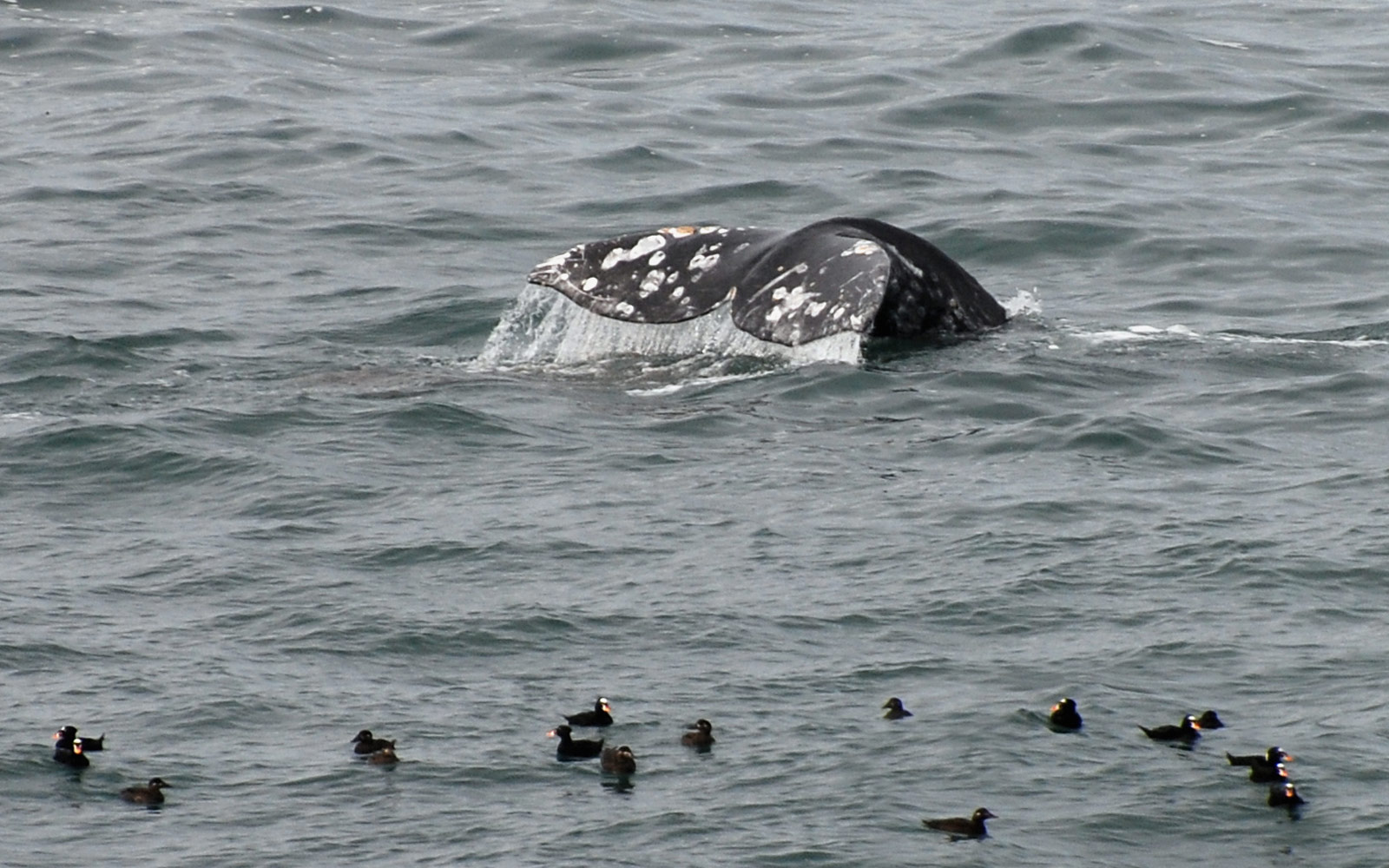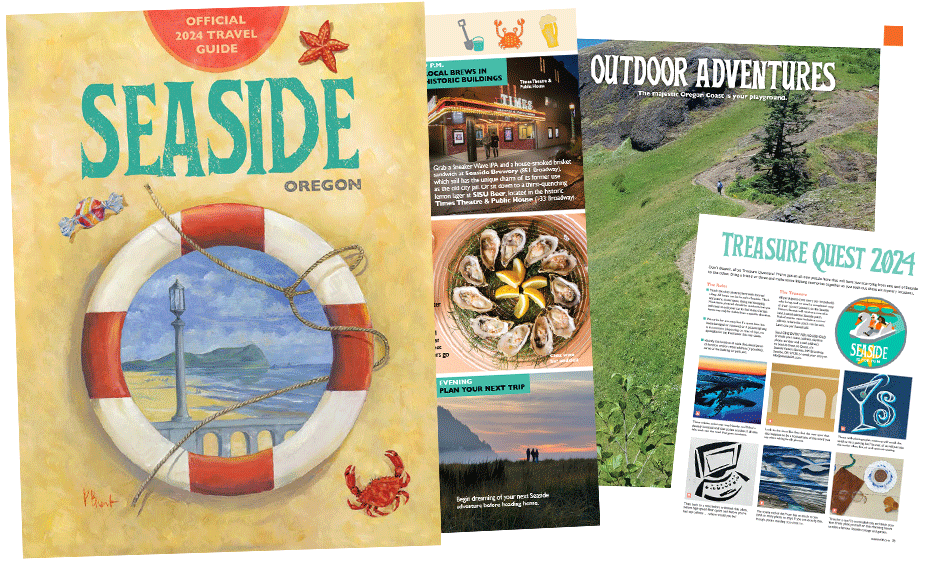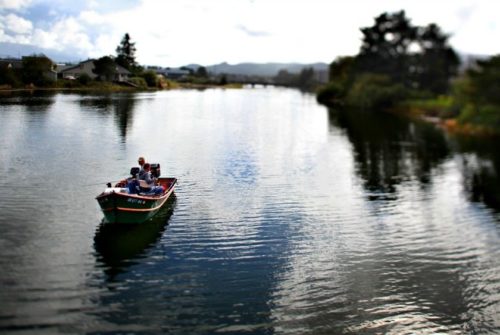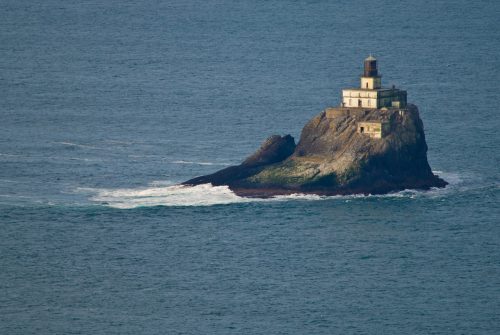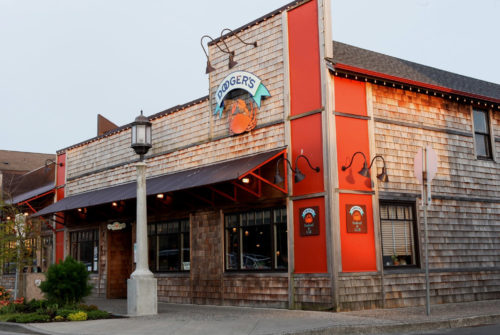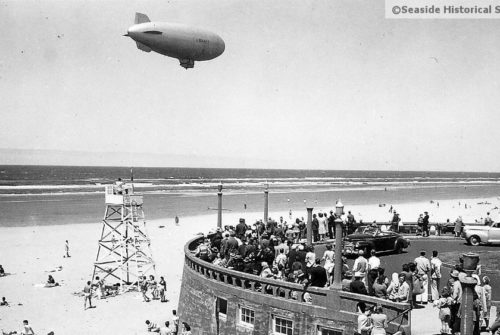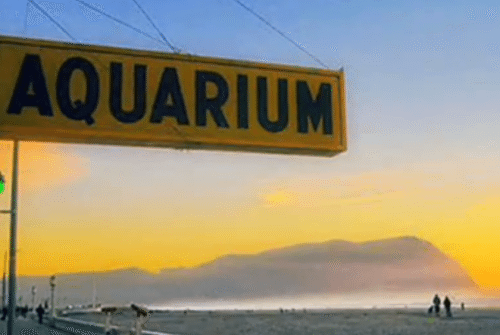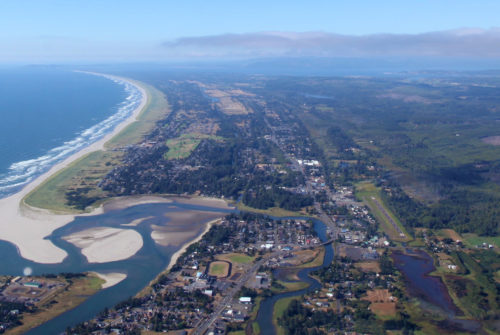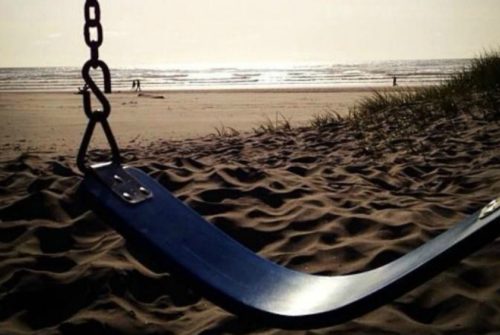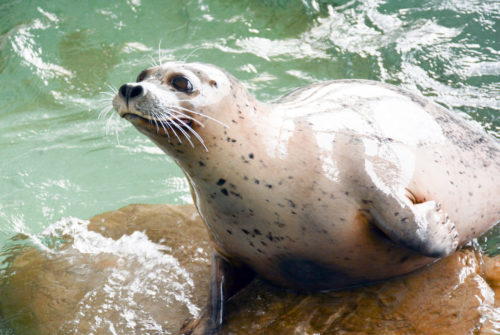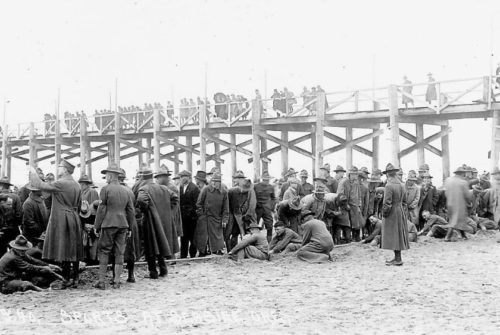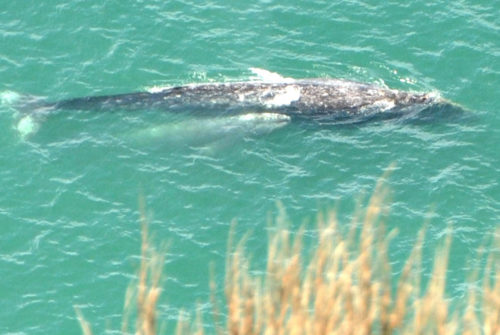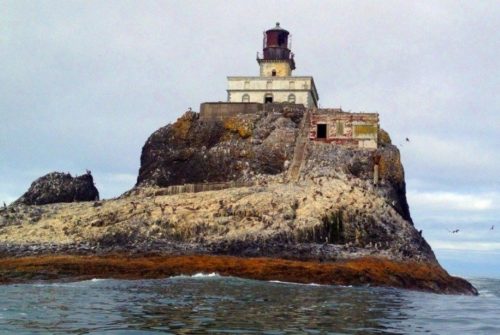** Story updated for 2022 **
While it’s possible to see whales all year along the Oregon Coast, visitors tend to flock to Seaside and other coastal communities during whale-watching season, which runs during the spring migration from mid-March to June.
Why Is Spring a Good Time to See Whales?
To improve your chances of seeing whales, we got some tips from an expert. Luke Parsons is an interpretive ranger with the Oregon State Parks’ Beverly Beach management unit, which oversees the Depoe Bay Whale Watching Center (currently closed due to limited staffing during COVID-19). He says that onlookers can expect to see 20,000 northbound whales migrating to their feeding grounds in Alaska starting in the middle of March.
How Are Things Different During COVID?
Due to the pandemic, the agency canceled its spring Whale Watch Week, traditionally set during spring break. This means trained volunteers and staff will not be available at whale-watching sites during spring break. However, visitors can post up along most of the 363 miles of Oregon coastline to spot whales on their own. Most Oregon State Parks viewing sites are open — just check the parks’ status map before you go, and know that some services may be limited. Find your favorite whale-watching site at the state’s official whale-watching webpage, and remember to follow all physical-distancing recommendations and have a blast wherever you go.
What Kinds of Whales Will You See?
“In March and April, we’ll see the males and the females that didn’t give birth to a calf,” explains Parsons. “In May and June, we’ll see the mother gray whales with their new calves swim by.”
But you’ll want to have your eyes peeled for more than just gray whales. According to Parsons, at least 10 species of whales swim off the Oregon Coast, including humpbacks and orcas.
How Can You Spot a Whale From the Shore?
“When I’m looking for whales, I first watch for spouts,” says Parsons. “This is when the whale comes up to breathe. Typically, a gray whale will spout about three or four times every five minutes, so I just slowly scan the water with my eyes. When I see something that looks like it was a spout, then I’ll use binoculars or a camera that can zoom in to try and get a better look.”
What Should You Bring for Whale Watching?
“I highly recommend binoculars for whale watching, as they can get you much closer to these whales, and you’ll be able to see much more of the animal,” advises Parsons.
Be cautious when viewing from clifftops. And if you choose to do your whale watching from the beach, never turn your back on the ocean. Sneaker waves and king tides are real dangers.
What’s the Best Weather for Whale Watching?
“The weather and ocean conditions are the most important thing to pay attention to when whale watching,” explains Parsons. “If the weather report calls for rain and wind, the chances of you seeing whales is much lower. If the weather at the Coast is clear skies and calm seas, you possibly could see dozens of whales in just an hour!”
What’s the Best Time of Day for Whale Watching?
Parsons recommends whale watching in the morning. The ocean tends to be calmer with less wind and sun glare on the water.
Where Are the Best Whale-Watching Spots Near Seaside?
You’ll find designated whale-watching stations at Ecola State Park between Seaside and Cannon Beach and the Neahkahnie Mountain Historic Marker along Highway 101, part of Oswald West State Park. If you head north, you can visit the station at Fort Stevens State Park. Check the parks’ websites before you go to see if there are any closures from storm damage.
How Can I Watch Whales From Home?
You don’t even have to leave home these days to appreciate the beauty of a whale migration. The NOAA’s Ocean Today digital project features educational videos of gray whale migrations, with lots of close-up footage. NOAA Fisheries has compiled a lot of gray whale facts, which can be nice to review before or after a wildlife adventure on the Coast. Did you know an adult gray whale weighs about 90,000 pounds?
What About Other Types of Marine Wildlife?
Most whale-watching hot spots are also great for spotting other marine mammals and seabirds. In particular, the offshore rocks visible from Cape Meares State Scenic Viewpoint are home to one of the largest colonies of common murres, and a favorite nesting spot for bald eagles and peregrine falcons. Other phenomenal birding sites in and around town include the Seaside Cove, Necanicum Estuary Natural History Park (where the Necanicum River meets the Pacific Ocean), the south end of Clatsop Beach (which includes Sunset Beach State Recreation Site ) and Fort Stevens State Park nearAstoria.
For the smallest marine wildlife like sea stars, purple urchins, gooseneck barnacles, hermit crabs, limpets, sea snails and more, visit the tide pools at Ecola State Park, Oswald West State Park and others. Whenever you visit a sensitive marine ecosystem, make sure to tread lightly and take only pictures — leave the wildlife for others to enjoy.
